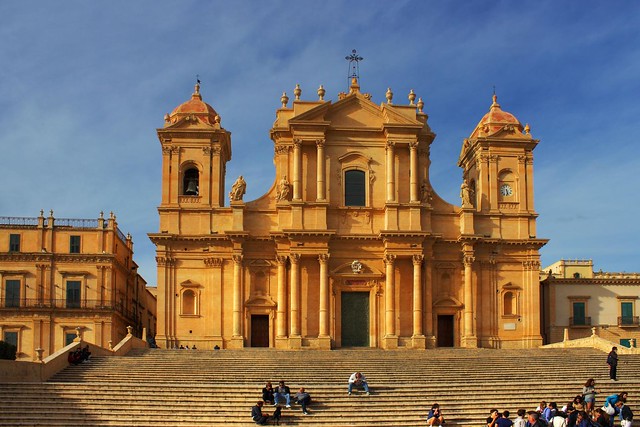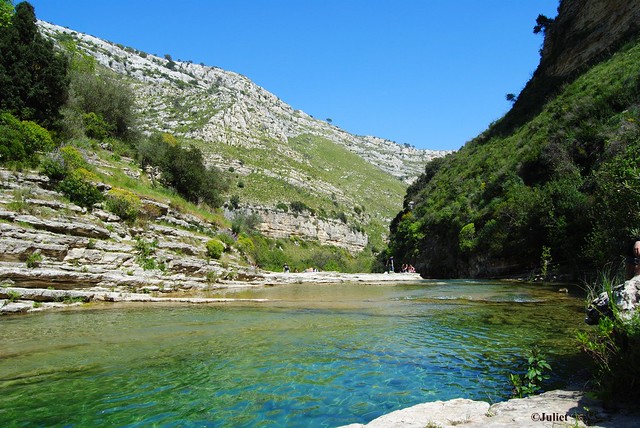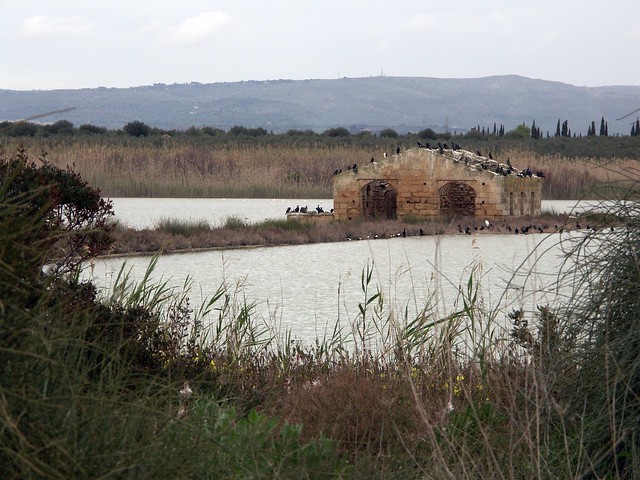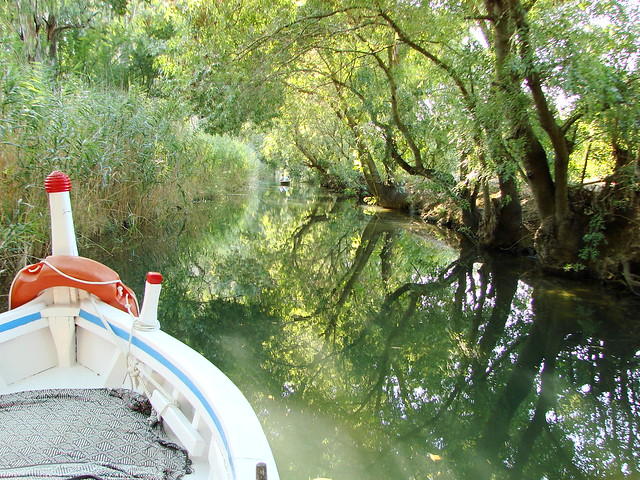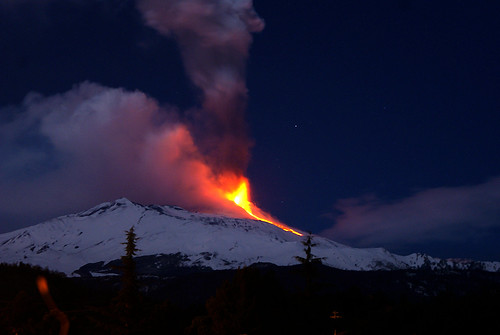Tourism in middle-east Sicily
Villa Giuditta is located in the heart of a wide location very interesting for middle east Sicily tourism; that's why the house is the ideal starting point to achieve in just one day many destinations famous for nature beauty, culture and architecture.
Here a brief description of the most important sites.
SIRACUSA
38 km from Villa Giuditta.
35 minutes by car.
Siracusa, registered since from 2005 in the Unesco World Heritage List, is very famous for the Archeological Park, with its Greek Theatre, the Heaven's Latomy wich includes the Dioniso Ear, the Cordai Cave and the Ierone II Are, and the Roman Amphitheatre.
Other interesting locations in Siracusa are the St. John's Basil with its catacombs excavated in the rocks, the Museum of Papyres, where you can see "live" all the work phases to realize the papyres, the Sicilian Archeological Museum wher you can admire a splendid collection of ancient finds; lastly, just in front of the museum, we want you to notice the Madonna delle Lacrime Sanctuary, built after the extraordinary prodigy of a Holy Virgin picture "tearing" in 1953.
Ortigia Island is the historical heart of Siracusa, a very fascinating place, rich of interesting architectonic views. On the cape of Ortigia Island is the Maniace Castle, built in the first half of XIII century from Federico II di Svevia. Other interesting fortresses are Fort Vigliena, inside the Spanish ancient walls along the Ortigia seafront and Eurialo Castle, 8 km outside Siracusa, where Archimede set fire to the Roman canvas with his burning glasses.
At the bottom of Ortigia seafront you will find the Aretusa Fountain, a really interesting geological site: a source of fresh water just at the seaside; its origin is related to the Aretusa Nimph and Alfeo the Hunter legend. Nowadays, the fountain is full of papyres, palm trees and swimming ducks.
Inside the Bellomo Palace Pinacoteca is the Antonello da Messina "Annunciation" and many manufactured goods from sicilian tradition.
Still in Ortigia, you can visit the suggestive St. Martin church; it's valuated as one of the most ancient churches in Siracusa.
In Piazza Duomo you'll be surrounded by churches and baroque palaces together with the Cathedral, built upon the goddess Athena temple. In the same square there is the Town Hall in Vermexio Palace and the ancient Malta Knights See in Beneventano del Bosco Palace. Other buildings of great interest thatoverlook the square of Duomo are the Archbishop's Palace, the Church of Saint Luciato the Abbey, where you can admire the painting by Caravaggio depicting the burial of Saint Lucia, the patron saint of the city of Syracuse.
In Pancali square you can admire the oldest Doric temple in Sicily, dedicated to the god Apollo.
In Archimede square lined with historic Aragonese buildings, such as Palazzo Platamonte, and the Palazzo Lanza whose century facadeis adorned with special windows. Other beautiful buildings of the fifteenth century are situated along Maestranza Street, including Impellizeri Palace with a beautiful facade adorned with grotesque masks.
In Alagona Street, you can visit amiqwè, which is a Jewish purification bath place 18 meters below street level.
NOTO
65 km from Villa Giuditta.
50 minutes by car.
In 1693, Noto was destroyed by a violent earthquake, after which there construction of the city took place in the style of the time: the Baroque.The misfortune of the earthquake was at the same time the good fortune to notice that since 2005 entered UNESCO heritage, having been recognizedas the capital of the Baroque.
The impressive Cathedral of St. Nicholas, which is located on theTown Hall Square, right in the heart of the city is characterized by an equally impressive monumental staircase access. Around the cathedral are other important buildings of great architectural value: the Bishop's Palace, Landolina Palace and Ducezio Palace, now the town hall.
On Nicolaci Street, a small road from the central Vittorio Emanuele Boulevard, stand the beautiful facade of the church of Monteverg in eand that of the Nicolaci building of Villadorata, with a balcony supported by sculptures representing hippogriffs, lions, mermaids, angels and various masks.
PALAZZOLO ACREIDE
60 km from Villa Giuditta.
55 minutes by car.
Another baroque town that lies in the province of Siracusa is Palazzolo Acreide; here, within walking distance of the city center, there is a small archaeological park which includes a very well preserved Hellenic theater dating from the third century BC
An interesting visit is to the house-museum of Antonino Uccello, where inside there are several original artifacts on the local rural culture.
RAGUSA
90 km from Villa Giuditta.
1 hour and 20 minutes by car.
Ragusa is a World Heritage site since 2002, for the many baroque buildings that distinguish it. The city, which is the provincial capital, is divided into two parts: Ragusa, the modern part of the city, and Ragusa Ibla, the old town center.
In the Upper Town, very interesting are the Cathedral of St. John, with an impressive bell tower and the church of Santa Maria delle Scale, with beautiful arches that characterize the facade, from here we have a beautiful view over the center town. In the ancient city, Ragusa Ibla, the buildings that can be seen are the church of St. Mary of Itria, with a dome decorated with mosaics depicting floral motifs, the Consentini Palace, with its beautiful baroque balconie sand cathedral of Saint George, with its neoclassical dome.
CAVA GRANDE
45 km from Villa Giuditta.
40 minutes by car.
A place of great scenic charmis undoubtedly the Nature Reserve of Cavagrande Cassibile. For millennia, the river flowing Cassibile has eroded the rock to form the canyon, as well as it appears today in the eyes of visitors. Nature trails through the walls and the bottom of the canyon, in some places they meet the natural pools in which you can see flock of small water falls where you can swim.
PANTALICA
35 km from Villa Giuditta.
53 minutes by car.
The ancient center of Syracuse is the most important part of Sicily. A pristine natural environment hides more than 5,000 tombs carved into the rock face. The necropol is dating back to the Bronze Age, in the past it was called Hybla. Even this site, in 2005, was declared a World Heritage Site. Visitors can discover the most beautiful corners of Pantalica along the many paths that cross it.
VENDICARI
65 km from Villa Giuditta.
50 minutes by car.
The Mediterranean and numerous marshes characterize the Oasis of the UNESCO. The nature reserve is home to a variety of birds during the irmigratory journeys between Africa and Europe: ducks, terns, herons, and many other species of birds can be observed particularly in the winter months between November and January.
Vendicari also has many beautiful beaches and coves where in summer you can swim, among which are Cala Mosche, Eloro and San Lorenzo.
FIUME CIANE
38 km from Villa Giuditta.
34 minutes by car.
To visit the Ciane River you can choose to take a nice walk or surf its waters with small boats, in both cases the excursions come to the mouth of the river.
The natural environment of Ciane is characterized by lush papyrus plants growing on its banks.
CATANIA
A 37 km from Villa Giuditta,
40 minutes by car.
Catania, baroque pearl, lies nestled between the homonymous plain to the south, the Ionian Sea to the east and Mount Etna, the highest active volcano in Europe, to the north.
In 600, after a little more than 30 years, Catania was first invaded by lava and later, in 1693, destroyed by a terrible earthquake. But as usually happens in these cases the destruction was an opportunity for the rebirth of the town of Etna: a new urban plan, with large streets, squares and monuments and designed in the Baroque style, largely designed by the architect Gian Battista Vaccarini.
Architectural relics of the distant past of the city are partly saved from destruction and have come down to us; among these are the ancient theater, the Odeon and the Roman amphitheater.
The long Etna Street, which starts from Duomo Square and that was also designed after the earthquake with a seismic modern conception, is the parlor of the city and is the heart of the business, political, religious and cultural activities. Along Etna Street, palaces and baroque churches are interspersed with shops, boutiques, bars and ice cream shops.
In Duomo Square is a fine show the Cathedral dedicated to St. Agatha and inside the relics of the saint.
Under the church there are the Achilleane Baths.
Catania dedicates for centuries to its patron Saint Agatha a grand celebration that culminates Feb. 3rd to 5th , is one of the three biggest festivals of Christianity in the world.
Those who visit Duomo Square can not help noticing the "Liotru", the elephant symbol of the city built in black lava stone and placed in the center of the square on the back with an Egyptian obelisk covered with hieroglyphics related to the cult of Isis.
Along the perimeter of Duomo Square, in addition to the Cathedral with its Baroque facade designed by Vaccarini overlook other important buildings: Palace of the Elephants, now the town hall, the palace of the Clerics and the Bishop's Palace, in the midst of these last two is the ancient Uzeda gateway where starts Etnea Street.
The characteristic and very popular fish market, of Sicilian oranges and so many other culinary merchandise, is located just behind Duomo Square, just beyond the nineteenth-century the Amenano fountain, called by the local people "L'acqua o lenzuolo".
Beyond the fish market you arrive in front of the towering medieval castle of Emperor Frederick of Savoia, Ursino Castle, in which there is a museum exhibition with precious Greek vases, Roman remains, and a collection of paintings ranging from the fifteenth the nineteenth century.
Two other very important guidelines that depart from Duomo Square are Vittorio Emanuele II Street, where reside the ancient theater and the Badia of Saint Agata, and Garibaldi Street, which ends with the port of King Ferdinand.
Walking along Etna Street, you meet first the University Square, and shortly after the Quattro Canti, a typical baroque crossroads that intersects with San Giuliano Street, after which you get to Stesicoro Square, where there are the remains of a huge Roman amphitheater and the monument dedicated to the great composer Vincenzo Bellini to whom Catania gave birth.
Another great outdoor market town of Catania, known to locals as "a fera o Luni", which is held every morning, it expands widely from Stesicoro Square.
Continuing on Etna Street you arrive at Villa Bellini, the most beautiful and important city garden.
Walking through the streets closest to the Etnea Street you can find a variety of architectural treasures; among them, one can not fail to mention the scenographic Crociferi Road, which is considered the Baroque par excellence, the sixteenth-century Benedictine monastery, the largest in Europe, Bellini Theatre, the temple city of opera with one of the best acoustics in the world, and the Palazzo Biscari.
Leaving the historic center and moving in the newest part of the city of Catania, between Europa Sqaure and Verga Square is the Italia Boulevard, an elegant shopping boulevard, very glamorous.
Right next to the central railway station, the trade fair grounds stands, called The Chimneys in which there are the Museum of Cinema and the D-Day landing.
Those who visit Catania will not go away without trying the excellent cuisine but especially the tasty pastry: the famous almond "granite" with warm brioches, biscuits, almond, pistachio and cannoli with ricotta are unforgettable tastes.
VOLCANO ETNA
80 km from Villa Giuditta.
1 hour and 40 minutes by car.
The highest peak in all of Sicily is that of the Etna volcano. Covered by snow in winter, the volcano reaches the altitude of about 3350 meters above sea level, however, this measure is repeatedly modified by frequent eruptions.
Etna is also called "Mount Etna" name derived from a misinterpretation of the Arabic term "Gebel", which means "mountain."
Etna was born in the Quaternary era and since then has always been active, in more recent history the most terrible cataclysm occurred in 1669, when a river of lava came down to the sea, devastating part of the city of Catania.
Nowadays, Etna erupts with a certain frequency and a plume of smoke is almost always present on the top. Its activity, often of a Strombolian, however, is relegated to the highest altitudes and does not threaten the inhabited places.
In 1987 was established the Etna park covering an area of 59,000 ha.
At the base of the volcano, which looks like a huge black cone, the land is extremely fertile and thrive numerous crops of oranges, mandarins, lemons, olives, agaves and prickly pears and pine; also thrives viticulture from which is produced an excellent wine.
Above 500 meters grow hazelnuts, almonds, pistachios and chestnuts; higher still, there are oak, beech, birch and pine trees. Widespread is the Etna broom, with its yellow color and its perfume, characterizes the landscape of the volcano.
From 2,100 meters above sea level up, the environment becomes almost desert.
Small mammals such as wild cats, foxes, porcupines, weasels and dormice inhabit the slopes of Mount Etna, while among birds there are hawks, kestrels, finches, woodpeckers and hoopoe.
There are many opportunities to visit the volcano. Routes of varying difficulty lead to the discovery of the most hidden corners of Etna: from easy and short nature trails well marked at the Great Crossing Etna (GTE), to be covered by a trek in 5 steps from 12 to 15 km each.
For those who want to ascend the volcano there are roads, trails, cable cars and shelters both from the north and from the south side: depending on weather conditions and the activity of the volcano, you can get to the highest altitude.
The "Circumetnea" is a very convenient way to get a quick idea of the majesty of the volcano, it is a rail trail that circumnavigates Mount Etna, starting from Catania and arriving in Riposto.
TAORMINA
A 90 chilometri da Villa Giuditta,
percorribili in circa 1 ora e 10 minuti.
Taormina sorge in cima ad una collina di fronte al mare sulla costa jonica della Sicilia, tra Catania e Messina.
La storia di Taormina vede il susseguirsi nel tempo di insediamenti di popoli greci, romani, bizantini, arabi.
Nell'ottocento, a Taormina arrivò Goethe che ne rimase entusiasta e ne cantò le bellezze in tutta Europa, portandola a diventare la capitale del turismo siciliano, attirando numerosissimi turisti.
Il Corso Umberto I, delimitato a valle da Porta Messina e a monte da Porta Catania, è la via principale di Taormina, costellata da negozi, ristoranti, gelaterie e caffé. Ma la vera anima di Taormina la si scopre addentrandosi nell'intricato labirinto di stradine secondarie che non mancano di offrire ai visitatori inattesi scorci caratteristici.
Il principale monumento di Taormina è il Teatro Antico; il suo valore artistico è amplificato dalla collocazione scenografica da dove si gode di un panorama mozzafiato sulla costa jonica e sul vulcano Etna. Dopo quello di Siracusa, il teatro di Taormina, costruito in epoca ellenistica (I - II secolo a.C.), è il secondo teatro antico dell'isola, vantando un diametro di 109 metri. I Romani lo hanno modificato per accogliere i combattimenti di gladiatori. Al giorno d'oggi il teatro è utilizzato nella stagione estiva per spettacoli cinematografici, teatrali e musicali, grazie anche all'ottima acustica.
Oltre al Teatro Antico, dai tempi dei Romani è arrivata fin ai giorni nostri la Naumachia, uno dei maggiori monumenti romani dell'isola, dove venivano simulate delle battaglie navali all'interno di un'enorme cisterna d'acqua.
Palazzo Corvaja, costruito nel quattrocento su una struttura più antica, è stato la sede del Parlamento siciliano. Sulla facciata dove si aprono grandi bifore gotico-catalane si trovano incise una serie di sentenze morali, scritte in latino. Molto interessante da vedere anche il suo particolare cortile interno, con una torre cubica risalente al periodo arabo.
Il Duomo, dedicato a San Nicola di Bari, risale al XIII secolo ma è stato rimaneggiato più volte nel corso dei secoli. L'aspetto squadrato con la facciata molto semplice ricorda le cattedrali normanne. In stile rinascimentale è invece il portale principale, con un piccolo rosone e due monofore ogivali; altri due portali, risalenti al quattrocento e al cinquecento, si trovano in diversi fianchi della costruzione. Il coronamento a merli le ha conferito il nome di cattedrale-fortezza. L'interno è strutturato a tre navate; qui sono custodite interessanti opere di Antonino Giuffrè e di Antonello de Saliba; di quest'ultimo è esposto, sul secondo altare della navata laterale destra, un bel polittico cinquecentesco.
Un altro interessante palazzo da visitare, bell'esempio di architettura siciliana, è quello dei Duchi di Santo Stefano, costruito fra il trecento ed il quattrocento con imponenti mura perimetrali.
Ai piedi di Taormina si trova la località balneare di Giardini Naxos. Situata a ridosso della lunga spiaggia che si stende da Capo Schisò a Capo Taormina, dagli anni '50 in poi è divenuta un importante centro turistico anche grazie all'attrazione esercitata dalla vicina Taormina.





